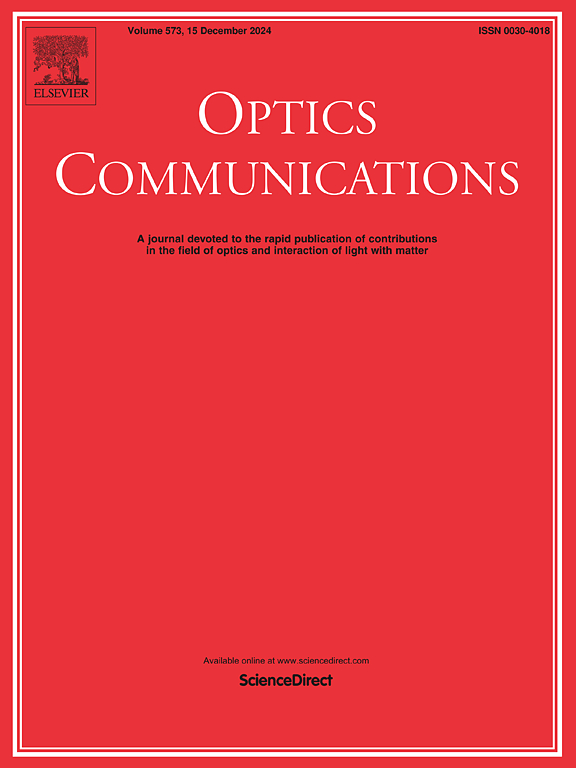基于超导体腔一维光子晶体拓扑边缘态的温度传感器
IF 2.2
3区 物理与天体物理
Q2 OPTICS
引用次数: 0
摘要
在这项研究中,我们研究了在两个不同的一维拓扑光子晶体(1D-TPhCs)的界面上产生的拓扑边缘态(TES),在界面上有一个超导层,设计用于高性能传感。为了研究该结构的光学性质和拓扑边缘状态,采用了传递矩阵法(TMM)和有限元法(FEM)。所提出的结构引起的TES和灵敏度强烈依赖于超导层的厚度、波的极化和周期数。该结构具有优异的性能,灵敏度S =0.55 nm/K,品质因子Q =1368.02,品质因数FOM =0.4074/K,是光子传感器中超灵敏温度检测的理想候选材料。本文章由计算机程序翻译,如有差异,请以英文原文为准。
Temperature sensor based on topological edge states in one-dimensional photonic crystals with a superconductor cavity
In this study, we investigate topological edge states (TES) arising at the interface of two distinct one-dimensional topological photonic crystals (1D-TPhCs) with a superconducting layer at the interface, designed for high-performance sensing. To investigate the optical properties and topological edge states of the proposed structure, both the transfer matrix method (TMM) and the finite element method (FEM) were used. The TES and the sensitivity induced by the proposed structure strongly depend on the thickness of the superconducting layer, the polarization of the waves, and the number of periods. The proposed structure exhibits exceptional performance, with a sensitivity S nm/K, a quality factor Q , and a figure of merit FOM /K, making it a promising candidate for ultra-sensitive temperature detection in photonic sensor applications.
求助全文
通过发布文献求助,成功后即可免费获取论文全文。
去求助
来源期刊

Optics Communications
物理-光学
CiteScore
5.10
自引率
8.30%
发文量
681
审稿时长
38 days
期刊介绍:
Optics Communications invites original and timely contributions containing new results in various fields of optics and photonics. The journal considers theoretical and experimental research in areas ranging from the fundamental properties of light to technological applications. Topics covered include classical and quantum optics, optical physics and light-matter interactions, lasers, imaging, guided-wave optics and optical information processing. Manuscripts should offer clear evidence of novelty and significance. Papers concentrating on mathematical and computational issues, with limited connection to optics, are not suitable for publication in the Journal. Similarly, small technical advances, or papers concerned only with engineering applications or issues of materials science fall outside the journal scope.
 求助内容:
求助内容: 应助结果提醒方式:
应助结果提醒方式:


